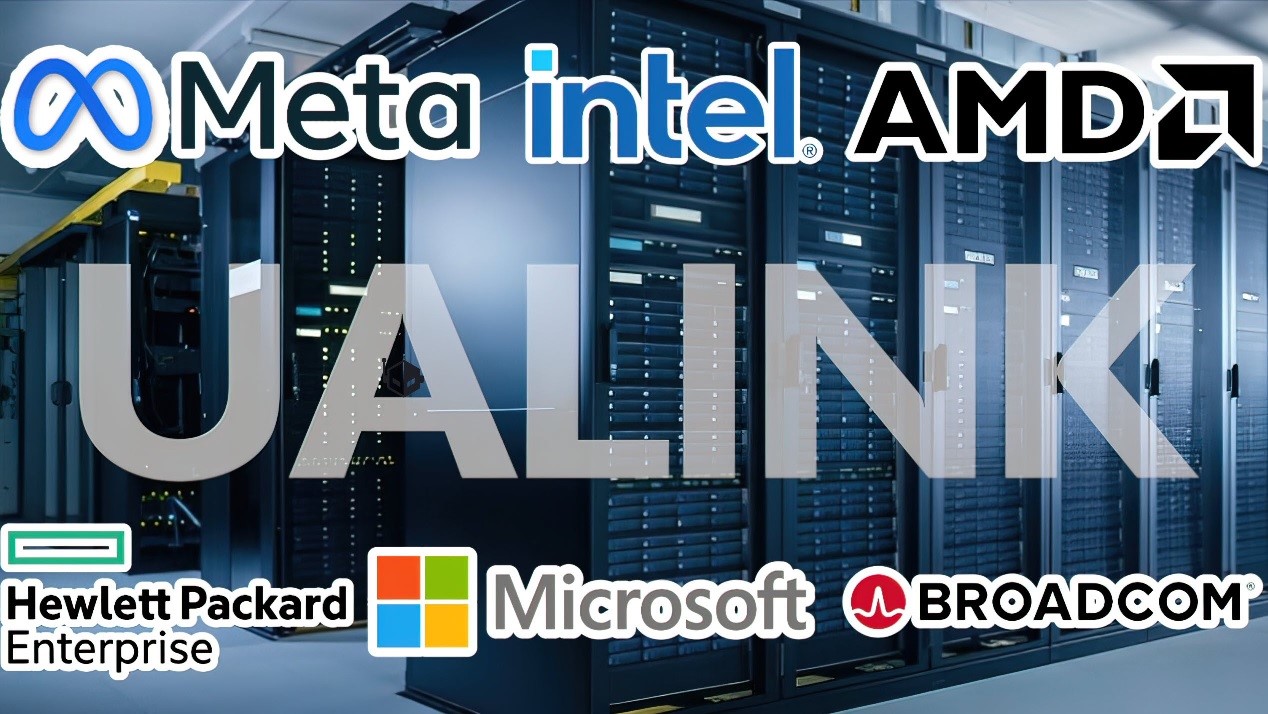Recently, the tech industry witnessed the formation of a noteworthy alliance. Tech giants such as AMD, Intel, Cisco, Google, and Microsoft jointly announced the launch of the UALink standard. This alliance, humorously dubbed the "Avengers," aims to challenge Nvidia's dominance in the AI and high-performance computing sectors. The introduction of the UALink (Unified Accelerator Link) standard marks a new phase of competition in technological standards and market dynamics.
Significance of the UALink Standard
The UALink standard aims to unify communication protocols among accelerators from different manufacturers. This means that accelerators from various brands and models can better interoperate, improving system compatibility and performance. The introduction of this standard is expected to break the current market monopoly held by Nvidia GPUs, offering users more choices while promoting market competition and technological advancement.

Image: Tech Giants Launch UALink Standard, Challenging Nvidia's Market Position
Why Tech Giants are Collaborating
1. Addressing Market Monopolies
Nvidia holds significant control in the AI and high-performance computing sectors. Its GPUs and associated software ecosystems have nearly become the industry standard in this field. Competing with Nvidia has been challenging for other companies, limiting market options. By jointly launching the UALink standard, AMD, Intel, Cisco, Google, and Microsoft hope to dismantle this monopoly and create a more open and diverse market.
2. Promoting Technological Advancement
A unified accelerator link standard can drive technological progress. Research and development efforts from different companies can collaborate and compete under a common standard, avoiding redundant development and focusing resources on solving core technical issues. This will accelerate the development and application of new technologies, enhancing the overall technical level of the industry.
3. Reducing Costs
For users, a unified standard can lower system integration and maintenance costs. Products from different manufacturers can seamlessly collaborate under a single standard, reducing compatibility issues and improving system stability and performance. For enterprise users, this means building more efficient computing platforms at lower costs.
Impact on the Market
1. Increased Competition
The introduction of the UALink standard will intensify market competition. Nvidia will face challenges from multiple directions. Accelerator products from other manufacturers, under a unified standard, will find it easier to enter the market and capture Nvidia's market share. Increased competition will drive companies to innovate faster, improve product performance, and reduce prices, ultimately benefiting users.
2. Changes in Industry Ecosystem
Currently, Nvidia dominates the market with its strong hardware and software ecosystem. The introduction of the UALink standard may alter this ecosystem. The new standard will encourage companies to cooperate and compete on a unified platform, creating a new industry ecosystem. For developers and users, this means more choices and greater freedom.
3. Technological Innovation
The UALink standard will promote technological innovation. A unified standard will enable different companies' R&D efforts to compete and collaborate on one platform, avoiding redundant development and improving resource utilization efficiency. This will accelerate the development and application of new technologies, advancing the entire industry.
Challenges Faced
1. Technical Integration Difficulty
Different manufacturers have varied technical systems, and achieving seamless integration under a unified standard is a significant technical challenge. In-depth technical cooperation is needed in hardware interfaces, software protocols, data transmission, and other aspects to implement the standard.
2. Market Acceptance
The new standard needs to gain widespread market acceptance and support. Users and developers need time to adapt to the new standard, and the associated hardware and software ecosystems need to be gradually established. Winning market trust and support during the initial promotion phase is a significant challenge.
3. Nvidia's Response
As the market leader, Nvidia will not easily relinquish its market share. Nvidia is expected to respond to the UALink standard challenge through technological innovation, market promotion, and strategic partnerships. How to gain an advantage in competition with Nvidia will be a long-term issue for alliance members.
Conclusion
The UALink standard, jointly launched by tech giants AMD, Intel, Cisco, Google, and Microsoft, marks the beginning of a new market competition landscape. By unifying accelerator communication protocols from different manufacturers, this standard is expected to break Nvidia's market monopoly, promote technological progress, and enhance market competition. However, the alliance faces challenges in technical integration, market acceptance, and competition with Nvidia. The future success and market adoption of this standard will determine the future landscape of the tech industry. For users and developers, more choices and greater freedom will be the most significant benefits brought by this standard.






